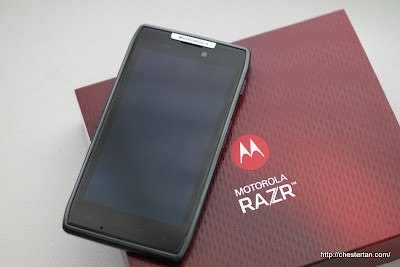While I take a break and enjoy my vacation in Hong Kong in Nov 2011, my gadgets went on overdrive.
This is the first time I brought my 4-year-old daughter abroad, so I need to make sure she is well-occupied. I brought all her favourite gadgets - the spare iPhone 3GS and the iPad, plus a comfortable pair of Sony MDR-Z1000 headphones.
 |
| Who doesn't love a pair of comfy cushiony headphones? |
I also brought the Logitech Wireless Keyboard for Tablet so that I can work using the iPad more efficiently. I love the hard slip-in case that converts into a stand to hold the heavy iPad.
For my own private listening, I used the Logitech UE600vi, an absolute ear-opener. It's so light and comfortable that I could wear this whole day. The treble frequency is not high and so it's very suitable for outdoor use. In comparison, the Sony MDR-EX1000 has very clear treble sound but when used outdoors, the treble overpowers the bass.
I love Hong Kong because it is a very well-connected environment, be it transport or telecommunications. Just 12 months ago, a 7-day unlimited data VAS from CSL costed HK$178. On this trip, it costs only HK$78! Thanks to the 1O1O shop staff at the airport departure hall, I got it set up on my Samsung Galaxy S2 in a brief, while my Singapore SIM card is moved to my iPhone 3GS. Besides data, this card offers free IDD call to many countries including Singapore - pay only HK$0.28 per minute!
 |
| This was the Prepaid SIM card I bought. Link |
The reason for using the Galaxy S2 for the Hong Kong prepaid SIM card is obvious: Android phones enable Wi-Fi hotspot. With that, I can tether all my mobile devices to the Galaxy S2 and enjoy data connectivity at no extra cost. I made sure all our other mobile devices' data roaming is turned off, and the Wi-Fi is connected to the Galaxy S2.
Besides the benefits of Wi-Fi tethering, the Samsung Galaxy S2 can also do USB OTG (on-the-go), which means I can plug an external storage device to the Galaxy S2 and it can read the storage device. Thus I am able to transfer photos from my cameras via a card reader to the phone and upload to Facebook. The photos are edited using the NX200 built-in editing tools and then resized.
And with so many gadgets, it is practically not possible to survive on a a couple power sockets in the hotel room. For that, I brought my own extension sockets to charge up all my devices. I even bought a portable battery pack just for this trip in case the phone battery runs out before the day ended.
Now that I've taken care of the gadgets, let me share some photos I took during the vacation and the process of capturing them.
Day 1: Going to the airport.
I took this shot on the moving taxi. After a dozen shots, this one captures the airport control tower without blur while the surrounding is. Tip: there is no way to guarantee a good shot on a moving vehicle. Just keep shooting and hold your camera steady.
Above, I used the Panorama mode on the Samsung NX200 to capture this seemingly fish-eye shot of the aircraft. You can see that Panorama modes are not limited to long stretches of images. This 4:3-looking aspect ration is achieved by panning using the portrait mode instead of the landscape mode.
Shooting without looking at the viewfinder takes some practice, but it's the only way to capture images at places where photography is not permitted. With a fast camera like the NX200, it doesn't take more than a second to get this shot and stealthily slip the camera back to my case.
Day 2: Checking the weather.
Still drizzling. Our original plan was to visit HK Disneyland on Days 2 and 3. But Day 2 weather is quite bad, so we had to hope for a better weather on Day 3. To get this shot, I had to anticipate her as she slowly heads towards the curtain.
That's Disneyland Hotel, and at the foggy distant background, the mainland Hong Kong, not the CBD, by the way. That's way too few skyscrapers if you noticed.
Bossini got the license to produce a range of Toy Story merchandise to tie-in with the opening of the Toy Story theme park in Disneyland. Unfortunately, the park only started from 18 Nov, about 10 days short from our trip. Nonetheless, Mayenne got to pose with this statue inside the 4-storey store at Sai Yeung Choi Street, among others. Notice the similar poses?
Day 3: It's Disneyland!
Weather was perfect! Cloudy cooling day with no precipitation! The moment we entered the park, we saw the queue for a photo shoot with Mickey and Minnie. We quickly got on the queue and captured this beautiful memory.
The must-watch show, Festival of The Lion King. Shooting in the dark is no problem for the Samsung NX200. Tip: set the camera to Manual exposure mode, maximum aperture, and then fine-tune the shutter speed, using the viewfinder as a guide.
I didn't take any still images of the Street Parade, because I felt that a video capture offers a better visual memory for my daughter (she still watches the video regularly at home till today). Here's one just to show the colour vibrancy of the Samsung NX200.
There were 2 things which I felt regretful as night time approached, yet the regrets were all negated by one non-event. One: the Samsung NX200 battery could not last the entire day. For that, I was fortunate to have a secondary camera, the Fujifilm Finepix F550EXR to capture video footages, while trying to conserve the NX200 battery for the fireworks. Second, I did not bring a tripod for the fireworks shoot. So I had to look for a flat elevated surface and attached my pocket flexi-pod. The only elevated surface I could find: the trash bin.
And this was the position.
But all these problems came to naught, when the PA announced that the fireworks show was cancelled!!
As the crowd dispersed, I attempted to capture a better shot of the Castle.
I wasn't able to capture any more shot, because at this point, the NX200 battery went completely flat.
Day 4: The Return
Before we checked out of the Disney Hollywood Hotel, we explored the garden, which is surprisingly well landscaped. If you are staying there, please make an effort to visit the garden.
At the airport, she insisted on handling her new luggage we bought for her. Doesn't she look like a seasoned traveller?
Credits:I'd like to thank the following companies for
lending me some of the gadgets to use for my vacation:
- Samsung for the NX200 and lenses
- Logitech for the UE600vi earphones and Wireless Keyboard for Tablet
There is also the
Sony Camcorder HDR-PJ10 which was not featured in this vacation blog because, despite their kind intentions to lend me, I decided not to bring for the trip because I had too many gadgets to handle. This camcorder has a built-in projector which can project up to 60-inch size, and records with an internal 16GB memory plus optional card slot for expandability. The original intention was to use the camcorder to record videos, and at the end of the day, I could project the footages in the hotel room. I tried it in my own bedroom and the brightness is rather good. In fact, it spurred me to look around for portable battery projectors so that I could watch movies in my bedroom without all the wires and heat and fan noise from the common projectors.
If you have any questions about the post, drop me a comment. You may follow me on my Facebook photography page at
Chester Tan Photography.




















































